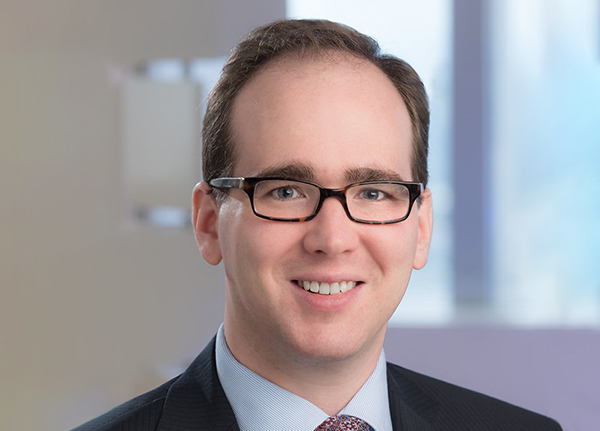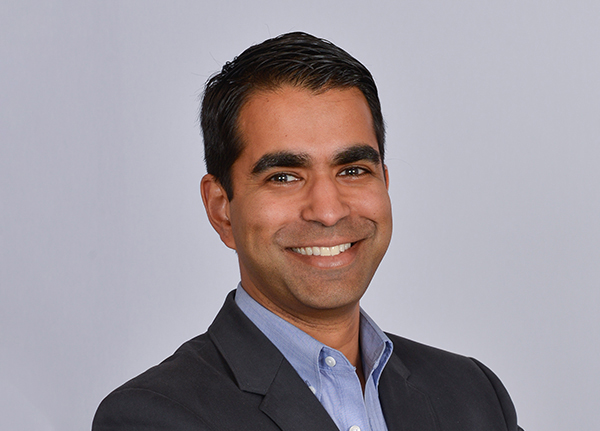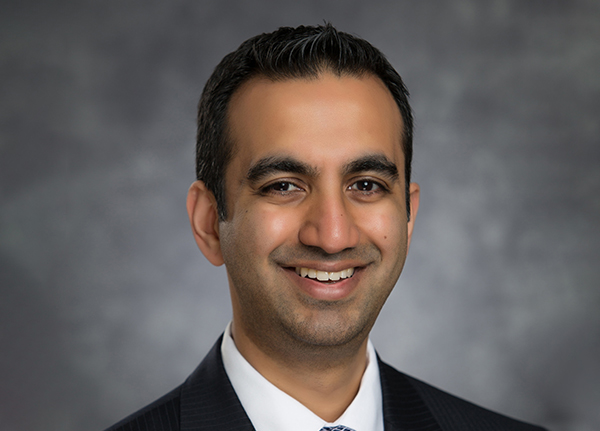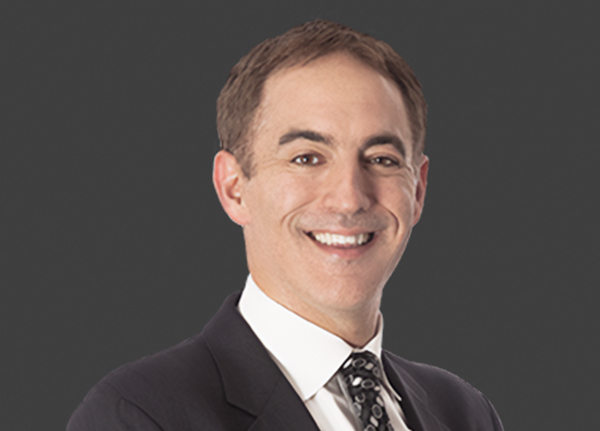-
Pricing, Litigation, Enforcement: The 2022 Law & Economics Symposium in Review
Which problem should be tackled first to lower drug prices? What’s changing in False Claims Act (FCA) drug-pricing litigation, and how is data mining shifting the ways in which FCA allegations arise? What role does drug value play in evaluating loss arguments in pharmaceutical class actions?
Four webinars in Analysis Group’s Law & Economics Symposium tackled these topics in 2022, generating lively discussions among a variety of academic and industry experts, legal counsel, and Analysis Group consultants.
What Happens Next? Value Assessment, Drug Pricing Policy, and the R&D Pipeline
Wednesday, June 8, 2022
Noam Kirson (moderator), Analysis Group
Joshua Cohen, Center for the Evaluation of Value and Risk in Health at Tufts Medical Center
Jeffrey L. Handwerker, Arnold & Porter
Anna Kaltenboeck, formerly Senior Health Advisor, US Senate Committee on Finance
Drug prices regularly command public attention, and proposals to lower them are a regular feature of the US public policy landscape. But the US pharmaceutical pricing ecosystem is complex, with a large number of participants, regulations, and market incentives. Within this vast pipeline, it can be difficult to achieve agreement on what’s causing the problem, let alone how to solve it.This panel’s experts examined the workings of the US pharmaceutical market and discussed the ongoing debate over value versus price when pursuing solutions for lowering consumer prices.1
What Price Is Right? The panelists agreed that drug pricing in the US depends on an extremely complex system of interactions between drug manufacturers, wholesalers, pharmacies, pharmacy benefit managers (PBMs), insurance companies, and regulators. With all these different forces at play, “price” means different things to the different participants, depending on their role in the system – including the ultimate consumer, the patient.
Jeffrey Handwerker

“There is a difference between list price on the one hand, which is set by the drug manufacturer, and the net price, which is the amount that’s actually charged to the insurer, [that is,] the list price minus the rebate amounts and other concessions that come off of that list price. That difference between list and net is extremely important, and the net pricing is not always visible.”Show Me the Value. When asking whether a drug price is too high or not, the value of the drug or treatment also comes into play. In many countries outside of the US, independent organizations such as the Institute for Clinical and Economic Review (ICER) provide health technology assessments (HTAs) that measure value in terms of benefit received, such as in quality-adjusted life years (QALYs) or the incremental cost per cured individual.
Joshua Cohen

“Which is preferable, curing more people and paying $300,000 a person, or paying only $189,000 per person but curing fewer people? And it’s not enough to compare the cost per cured person; we also need a general yardstick that tells us if $300,000 per cure is a good deal. Hence, making it reasonable to cure more people even though the cost per person is higher.”A Delicate Balance. A critical component of the ongoing debate over drug pricing is understanding what level of revenue is needed to incentivize drug manufacturers’ investment in risky innovation. Would lowering prices mean sacrificing the kind of innovation that has led to more-effective treatments based on cutting-edge technologies such as CAR T-cell therapy?
Joshua CohenAnna Kaltenboeck

“We don’t want the price too high, we don’t want to be paying more than the benefits of the drug, [but] on the other hand, we don’t want to be paying too little because then we don’t have good incentives for innovation.”

“How do we foster innovation? [T]here’s nothing wrong with spending a lot of money for drugs, but it would be great if we spent that money in such a way that the best drugs get the best prices, and less-effective drugs get a little bit less. … I think coming back to that notion of saying, ‘What is the value to the system of a product?’ and then rewarding it accordingly also has a beneficial effect upstream to innovators who are thinking about what the next big thing is, and where they should be investing their money.”
How Big Is Too Big? The panel also discussed how the increasing vertical integration in health care markets, such as PBMs being absorbed into large insurance companies and national pharmacy chains, could have a potential impact on the role that competition and market power play in influencing drug pricing and, ultimately, out-of-pocket costs for the consumer.
Anna Kaltenboeck

“There is consolidation across the entire health care system. PBMs obviously, and wholesalers, but even pharmacy retail chains now are [much more] consolidated. … There is, without a doubt, purchasing power in play in that, [as] the dynamics of the supply chain dictate how net prices play out…, they also dictate how list prices play out, but that these things are intimately linked is an accurate observation.”
False Claims Act and Drug Pricing-Related Cases
Wednesday, September 14, 2022
Crystal Pike (moderator), Analysis Group
Anupam B. Jena, Harvard Medical School and Massachusetts General Hospital
Andrew O’Connor, Ropes & Gray
Christopher Ody, Analysis Group
Jesse Siegel, Ipsen Biopharmaceuticals
In recent years, FCA enforcement seemingly increased its focus on drug pricing, and in particular matters involving higher-priced drugs. While cases involving more traditional areas of scrutiny, such as physician participation in speaking programs and consulting arrangements, continue to be pursued, recently there have been increases in cases where the questions center around the impact of companies’ actions on drug prices and on government policies and programs originally intended to help control the costs of pharmaceuticals.This panel of industry, legal, and economic experts explored some of the key compliance priorities that are facing pharmaceutical and biotech companies with respect to the FCA and the Anti-Kickback Statute (AKS), as well as the economic and pricing issues that are often at the crux of these matters.
Not Over Yet? The panelists noted that patient support programs (PSPs) – especially those that offer copay assistance to Medicare patients for drugs, including through charitable organizations – are drawing increased attention due to a perceived risk that pharmaceutical manufacturers could use them to steer patients toward their own products, potentially violating the AKS and the FCA.
Andrew O'Connor

“Even though I think there’s some perception that the copay assistance wave may have crested at this point, it is still a very active area for DOJ and a very significant risk area for clients in this space.”
Beware of Unintended Consequences. Enforcement agencies seem increasingly concerned with the question of whether cost-sharing programs can lead to potential excess use of a drug. However, an overly simplistic approach to this issue will not account for the broader impact on patient health and total health care costs. For example, a reduction in copay assistance due to increased FCA enforcement could also lead to under-utilization of drugs certain patients need, which in turn could lead to worse outcomes and higher hospitalization costs. It also may oversimplify the reality and need in highly specialized or rare treatments.
Jesse Siegel

“When I think about the Anti-Kickback Statute, we all know that there are no safe harbors for traditional patient support like copay, temporary patient assistance, or reimbursement education – what I think of as the nuts and bolts of a traditional patient support program. And I think the government understands…traditional aspects of the patient support, but I don’t think the government has as strong of an understanding of the high-touch patient support that’s often required in rare or ultra-rare diseases. When it comes to things outside of those nuts and bolts, I do worry a lot and think a lot about how to structure those [programs] in a way that shows our compliant intent to support patients, rather than using them as some sort of inducement to refer, prescribe, and purchase.”
It’s Never Simple. A plethora of clinical practice and market considerations go into developing pricing strategies, and these must be factored into any examination of causation and utilization in FCA or AKS cases.
Christopher OdyAnupam B. Jena

“[One] issue is that many [drug] purchases would have still occurred ‘but for’ any promotional activity. … And promotions often occur at the same time as other events that would affect utilization. The same is true for copay assistance or for price concession matters.”

“[As a practicing physician,] my general thought is that the most important determinant [in prescribing decisions] is the clinical factors that are involved. What disease does a patient have? What medications does a doctor think are going to work best for [that patient]? What side effects or interactions might that medication have with other drugs they’re on?”Data Mining and the False Claims Act: Key Takeaways
Wednesday, October 12, 2022
Mihran Yenikomshian (moderator), Analysis Group
Paul Kalb, Sidley Austin
Amol Navathe, Perelman School of Medicine and The Wharton School, University of Pennsylvania
Paul Starrett, PrivacyLabs
Historically, the DOJ has relied almost entirely on whistleblowers to bring forward FCA allegations, as they can often provide firsthand accounts of the conduct in question. Increasingly, however, the DOJ is using sophisticated algorithms that screen data in order to root out FCA violations. How is the government using these data analytics? And what can companies do in-house to proactively assess their own risk?The Rise of Data Analytics. While the number of qui tam cases, in which a private individual makes an allegation on behalf of the government, rose in the 2010s, cases without a whistleblower became much more prevalent in 2020 and 2021. The DOJ has noted that this is at least partially due to its increased use of data analytics – including machine learning – to move forward on its own, with less reliance on insiders.
Paul Kalb

“The vast majority of False Claims Act cases continue to be driven by qui tam whistleblowers. But what you see in 2020 is a very significant increase [in cases] that were initiated by the DOJ. And then, in 2021, you see, generally speaking, a continuation of that trend. So, in 2020 and ‘21, we’ve seen not only a significant absolute increase in the number of DOJ-filed claims, we also see an increase as a percentage of the overall [number of cases]. And the Department has stated that that jump is a reflection of its increasing use of data analytics.”
Retaining the Human Touch. Even amid the vast expanse of health care data available, human intervention remains critical to determining whether fraud is present, as some courts have noted in their deliberations.
Amol NavathePaul Starrett

“If there is some other explanation for the outlier status – perhaps the hospital is just better or perhaps it just has a different population or it’s just doing something different but legal – then statistics alone are not adequate to complete a fraud case. And [in US ex rel. Integra Medical Analytics] the Ninth Circuit effectively adopted the same reasoning.”

“Human intervention is still very key, both at the development of the model but also [in analyzing] the results that come out. I think we’re still at a stage where there has to be strong human intervention rather than just relying on the machine learning.”
Going Beyond the Numbers. For instance, raw data without the appropriate context might flag disruptions to health care delivery from the COVID-19 pandemic, such as increased prescribing during telehealth appointments, as potential fraud. In actuality, such disruptions may simply come from real-world, practical solutions – in this case, telehealth as, at times, the only care delivery available during a viral pandemic.
Amol Navathe

“We’ve seen a massive shift of how care has been delivered inside the home in a remote fashion rather than within a brick-and-mortar setting. There’s also, because of that, big changes in how prescribing patterns have evolved, how prescription adoption has happened – and in terms of seeming adherence, because of the way that pharmaceuticals manufacturers, as well as pharmacies, have adapted the way that they actually get medicines to people. And so, if you looked at that data, it would look very different in the post-COVID world.”
What Can We Do? Because none of the models being developed for detecting fraud is perfect, companies should examine their own practices proactively to stay ahead of others who have access to the same data.
Paul Kalb

“Compliance programs really have to be bespoke. There’s no one-size-fits-all. But I do think that the company should be thinking about these issues against the backdrop of two related but different questions: What are we expected to do, and what should we do?”Economic Loss Arguments in Pharmaceutical Product Liability Class Actions
Wednesday, December 14, 2022
Brian Ellman (moderator), Analysis Group
David C. Chan, Jr., Stanford University; Center for Health Care Evaluation, US Department of Veterans Affairs Palo Alto; US Department of Veterans Affairs QUERI Center for Policy Evaluation
Punam Anand Keller, Center for Business, Government, & Society, Tuck School of Business at Dartmouth
Timothy E. Kosty, Pharmacy Healthcare Solutions
Gregory E. Ostfeld, Greenberg Traurig
Product liability litigation matters are nothing new for the pharmaceutical and medical device industries. What is new is the number of follow-on litigation cases in which plaintiffs allege that they have suffered economic losses – as opposed to health-related injury – as a result of their payment for the medical product involved in product liability matters.This panel’s experts explored the legal framework of such litigation and the intricate network of economic, clinical, industry, and consumer behavior dynamics that inform the determination of economic damages.
Where’s the Harm? Economic loss cases in this industry often involve classes of plaintiffs that may not have suffered adverse treatment outcomes themselves, or may not even have been exposed to the medical products at all – for example, insurance providers that paid for the product on behalf of their beneficiaries.
Gregory Ostfeld

“All you need [in economic loss cases] is a purchaser. You don’t necessarily need to prove causation in the traditional product liability sense of demonstrating that a particular plaintiff suffered a particular physical ill effect. The theory is that the product is less valuable than the price paid due to the undisclosed condition, defect, or impurity.”It’s Complicated. Certain aspects of health care markets complicate the assessment of potential economic loss from product liability allegations – in particular, the number of parties other than the patient (including prescribers, PBMs, insurers, and even dispensing pharmacies) – that influence the ultimate purchase.
David ChanPunam Anand Keller

“[First,] in health care markets in general, patients rely on agents, physicians in this case, to make decisions on their behalf. … [B]ut in many cases, they’re imperfect agents for their patients. [Second,] drugs are subsidized by insurance companies. And when insurance companies and patients together pay the full price, the full price no longer reflects the economic value to the marginal consumer.”

“Whether a physician prescribes a medication depends not only on several patient factors but the physician’s personal experiences, anecdotes from other patients, peer practices, experts’ opinions. … [Physicians assign] different values to the same drug for different patients and also different values for the same drug for the same patient over time. We don’t observe that level of customization in other markets.”
Worth Less or Worthless? The panelists discussed at length two primary allegations of economic loss in these cases: claims that the drug in question becomes “worth less” than the product plaintiffs thought they were purchasing, or, alternatively, claims that the alleged defect renders the drug entirely “worthless.” The experts agreed that the “all or nothing” approach to economic value was a difficult one to rationalize.
David ChanGregory Ostfeld

“When I think about worthlessness as an economist, I think about willingness to pay. … It’s a more complicated concept in the health care sector.”Timothy Kosty

“If you got what you paid for at the time of sale, the fact that you later regretted the purchase is not necessarily an economic loss. The challenge becomes drawing the line between economic loss at the time of sale and post-sale regret.”Punam Anand Keller

“Patients did get those medications. They took them. They received therapeutic benefit from them. And once the issue [with the drug] was identified, then the industry has a regulatory component that was able to address it.”

“This approach [i.e., that the drug in question has no value] is overly simplistic. It does not account for the realities of the health care decision-making process, both from the physician’s perspective as well as the consumer’s perspective. It is more likely that many consumers utilized a more holistic decision-making process, what we call in academia a compensatory decision-making process, and would still attribute significant positive value to the drug [even] after becoming aware of the new impurities.”
A Question of Value. Ultimately, panelists said, the true economic value of a drug can only be established through a nuanced understanding of how treatment and purchase decisions are contextualized in the real world.
Timothy KostyDavid Chan

“The entity that would make those determinations [affecting coverage decisions] would be the pharmacy and therapeutics [P&T] committee for the payer, PBM-insurer, [or] one of those third-party plans. When P&T committees look at a new product that’s coming to the market, they really have a couple of decisions they want to make. [One is] from a clinical perspective based on the evidence of the clinical studies: Do we want to cover this drug, yes or no? … You look at what are the therapeutic alternatives. Is this a limited issue with one supplier of the product, perhaps? … All those components come into play to decide what action to take.”
Timothy Kosty

“How much a drug has value to a given patient would in principle depend on [the decisions they make based on their consideration of] efficacy, side effects, and convenience. Physicians and patients in turn make their decisions in the context of guidelines and P&T committee recommendations. It’s a complicated landscape of decision making in health care. And simply asking patients a question [in a survey] of how they would weigh one feature versus another is not realistic.”

“But the thing to keep in mind is [that] the [pharmacy] record is the final result of all those decisions we’ve been talking about that influence what happened. So, it tells you what happened; it doesn’t tell you why it happened. And the why it happened is what’s critical in these cases, in my mind.” -
Endnote- The webinar touched on proposed health care provisions included in the Build Back Better Act passed by the US House of Representatives in November 2021. Some elements of Build Back Better, such as a program for lowering prescription drug costs for Medicare beneficiaries, were later adopted in the Inflation Reduction Act, which was signed into law in August 2022.

